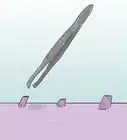This article was co-authored by Timmy Yanchun. Timmy Yanchun is a Professional Barber and Co-Founder of Svelte Barbershop + Essentials. Svelte Barbershop + Essentials is a men’s grooming company, specializing in men’s hair, beard, skin, and shave products, originally located in the SLS Hotel in Beverly Hills, California but has now branched out to 3 locations across Los Angeles. Timmy has been cutting hair since age 13 and opened his first of 6 barbershops at age 18. He is also the co-founder of the newly launched brand LTHR, the world's first wireless hot lather machine for barber quality shaves at home. Timmy and Svelte have been featured in GQ, Men's Fitness, and Hypebeast.
wikiHow marks an article as reader-approved once it receives enough positive feedback. In this case, 89% of readers who voted found the article helpful, earning it our reader-approved status.
This article has been viewed 1,217,697 times.
If you’ve never shaved with an electric shaver before, you’re (understandably) probably confused about how exactly it works. Shaving with an electric shaver is a lot faster, but it definitely takes some getting used to. We’ve put together this step-by-step guide to teach you what you should do, what you shouldn’t do, and how to avoid irritation and those dreaded razor bumps. Before you know it, you’ll be using an electric shaver like a pro.
Steps
Preparing to Shave
-
1Choose the shaver that best fits your needs. Read men’s forums or consult a grooming specialist, like a barber who specializes in facial shaves, to understand how your facial hair grows and the correct technique to approach the contours of your face. Everyone’s hair grows at a different rate and has a different texture so be aware of what features benefit you most.
- While electric shavers are mostly used for dry shaving, new models can also be used for wet shaving as well. However, new wet models may be pricey.
- Consumer sites can help you determine which shavers suits your price point. Some shavers may be overpriced based on added features that you do not need for your specific hair type.
-
2Wash your face. Warm water, a hot shower, or a warm face cloth will help soften your beard and thus make it easier to get a clean shave.
- Wash your face with a gentle facial cleanser to get rid of any dirt that has built up.[1] If you have sensitive skin, consult a skin care specialist to find out what cleanser is best for you.
- Wet a washcloth with hot water if you don’t have time to shower. Hold it to your beard/stubble for a few minutes.
Advertisement -
3Allow your face to adjust. It usually takes about 2 weeks to adjust to an electric shaver but during this time, the oils from your shaver will blend with those of your face.[2]
-
4Use an alcohol based pre-shave. Alcohol based products will remove dirt and your skin’s natural oil (sebum) from your skin and make your facial hair stand straight up.[3] A powder version can be used if you find alcohol to be an irritant.
- Most pre-shave products include ingredients like vitamin E to ensure that your skin is protected and irritation is reduced.[4]
- There are some products like pre-shave optimizer and pre shave oil that can improve the effectiveness of an electric shaver.[5] Consult a skin care specialist to find out what best works for your skin. Stick to your skincare routine once you’ve found what works for you.
-
5Find the grain of your facial hair. Rub the places where your facial hair grows and the direction that feels smooth is the direction that’s "with the grain." This other direction will give resistance when you rub it. This is "against the grain."
- It does not matter whether your facial hair is straight, curly or coarse, learning the direction it grows allows you to avoid irritation and in-grown hairs.[6]
Choosing between a Rotary Shaver vs a Foil Shaver
-
1Identify what factors are most important to your shave. Whether you want to save time, avoid mess, or get a close shave without irritating your skin, there are basically two types of electric shaver to use: rotary and foil. Rotary shavers utilize a revolving motion that guarantees a closer shave.[7] This is a very popular choice because it doesn’t pull hair and provides a comfortable shave.
- The three rotating mechanisms of a rotary shaver can help with hard to reach areas. Flexibility can depend on the brand so do your research to accommodate the contours of your face.
- Titanium blades that form part of the rotary mechanism aid in painless shaving.[8]
- A foil shaver has oscillating blades behind steel foils that lifts the hair out of the face as opposed to cutting it. These electric shavers have 3 to 4 blades and more blades means a reduced shaving time but can also be more noisy . The large head allows you to cover more area so this choice may be right for you if you want a quick and efficient shave.[9]
-
2Replace your blades periodically. Foil shavers need the foil replaced every 1 -2 years depending on the toughness of your stubble. If you end up pressing harder to get a decent shave, chances are that you forgot to change the foil. Rotary blades needs to be replaced once a year.[10]
- Skin irritation is another sign that you need to change the foil.
- Don’t throw away the manual as details of how to replace parts and valuable manufacturer contact information will become invaluable the longer your keep your shaver.[11]
-
3Shave with proper technique. Understand that each shaver utilizes a different method to remove hair so optimize your shave by moving in a supplementary direction.
-
4Keep your shaver clean. Debris can easily build up, especially if you have thick facial hair so be sure to regularly clean your electric razor. Do not bang your shavers or use tools that aren't specific to cleaning shavers.
- Foil shavers by Braun, Panasonic or Remington can be cleaned by lifting the head frame off and gently brushing out the whiskers from the under side with the cleaning brush supplied by the manufacturer. Do not touch the screen because it is very fragile.[14]
- Philips rotary head shavers can be cleaned by lifting off the razor head assembly and brushing out the under side of the three cutters and the razor chamber. Don’t tap the heads on the sink as it may dent or damage the precision-made combs.[15]
- Remove each cutter and comb the retaining plate of your rotary shaver every other month, or more if you have thick or fast growing hair, by brushing the whiskers from the cutters and soaking them in liquid cleaner and lubricate.[16]
Shaving with an Electric Shaver
-
1Ensure your blade is sharp. It is recommended that you replace these at least once a year, or you will fail to get a good shave, and may end up irritating your skin.
-
2Hold the shaver in your dominant hand. For example, if you use your right hand to write, also use it to shave. Use your off hand to hold your skin tight as you go over your skin with the shaver. Make sure to shave against the grain if you want a closer shave but careful to take your time for best results.
- Hold the shaver at right angles to your face as your other hand pulls the skin taught to ensure hairs stand upright. This will also create maximum skin contact which reduces shaving time and minimizes snagging.[17]
-
3Use your non-dominant hand to pull your skin tight. This will help you get the closest shave possible.[18]
-
4Shave your cheeks and the side of your face. Shave with the grain, usually from the top towards your jaw.
- Shaving against the grain gives a closer shave but is an easy way to cut yourself and you run the risk of cutting hair below the skin level, which creates ingrown hairs. These are also known as razor bumps because the whisker grows into the surrounding tissue instead of out of the pore, which causes inflammation and possible infection.
-
5Shave your sideburns. Make sure to look at the mirror at a level angle to ensure both sides are even.
- Put down the shaver and use both index fingers to help give you some perspective of which side is longer by placing each finger at the bottom of each side burn. For example, place your left finger at the bottom of your left side burn pointing towards your reflection in the mirror. Do the same with your right finger at the same time to get a sense of which side burn is longer and adjust accordingly.
-
6Shave your mustache area below your nose. Use your index finger of your non-dominant hand to lift up your nose and force your upper lip downward to provide more surface area for you to shave.
- You can also try moving your upper lip away from the direction that you are shaving. For example, shave downward and to the left as you move your upper lip toward the right. This will help flatten out your skin and expose your shaver to more of your hair.
-
7Shave underneath your lip and chin. Bite and suck in your lower lip to maximize the surface area that the shaver touches. Go slowly around your lip to make sure you don't cut yourself.
- You can also try moving your jaw away from the direction of your shaving stroke. For example, shave downward and to the left as you move your jaw to the right. This will flatten out your skin and expose your shaver to more of your hair.
-
8Shave your neck and beneath your jaw. This area is the most sensitive and the trickiest so take your time.[19] Tilt your head up and move closer to the mirror to get the best visual angle.
- Many men with sensitive skin should shave the most tender areas, like the neck area below the jawbone, first, and then move to tougher spots like between the ears, nose and mouth because some shavers generate heat that can cause irritation.[20]
-
9Check your mirror for missed spots. Electric shavers may leave small patches in hard to reach areas so it's best to take a look in the mirror before putting away your shaver.
- Wash away and wipe off any loose hair and use your finger tips to feel if there are any loose strands remaining.
Maintaining Your Skin and Shaver After You Shave
-
1Apply lotion to your newly shaved face. This is especially important if you use alcohol based pre-shave, as the alcohol dries your face out.
- Consult a skin care specialist to find out what after shave works best for your skin type.
- Aftershaves, eau de toilets, and colognes are used for different purposes. Aftershave helps to give you a fresh scent after shaving while moisturizing and medicating your skin. Be aware of your surroundings in case coworkers or others in close proximity are sensitive to the strong smell that these products may provide.
-
2Clean your razor. In many models you can lift off the head of the razor. You should then brush the whiskers out of the cutter and cleaning brush.
-
3Lubricate the metal pieces of your cutter and screen. A small amount of lubricant should be sprayed on the screen while the razor is running. Do not wipe it off when you're done.
- Consult the user's manual for what lubricant works best for your model. Do not use a lubricant meant for other tools as it may contain harsh chemicals not meant to touch your skin.
- Consult a skin care specialist immediately if a rash or irritation happens after applying a new lubricant. Chances are you’re having either an allergic reaction to the lubricant or a combination of the lubricant and other skin care products.
Community Q&A
-
QuestionCan you get a close shave with an electric shaver?
 wikiHow Staff EditorThis answer was written by one of our trained team of researchers who validated it for accuracy and comprehensiveness.
wikiHow Staff EditorThis answer was written by one of our trained team of researchers who validated it for accuracy and comprehensiveness.
Staff Answer wikiHow Staff EditorStaff AnswerAn electric shaver can give a close shave, although it is not considered as close a shave as a cartridge razor. Try a top quality wet shave model, using shaving cream or other lubricant to soften the hairs, thus making it easier for the electric razor to get closer to the skin. Some people claim that it helps to shave against the grain with an electric shaver to produce a closer cut; since it possible to shave against the grain with an electric shaver, perhaps give this a try. Caring well for your shaver matters too; clean it well, oil it regularly and keep it well charged to provide better shaving outcomes.
wikiHow Staff EditorStaff AnswerAn electric shaver can give a close shave, although it is not considered as close a shave as a cartridge razor. Try a top quality wet shave model, using shaving cream or other lubricant to soften the hairs, thus making it easier for the electric razor to get closer to the skin. Some people claim that it helps to shave against the grain with an electric shaver to produce a closer cut; since it possible to shave against the grain with an electric shaver, perhaps give this a try. Caring well for your shaver matters too; clean it well, oil it regularly and keep it well charged to provide better shaving outcomes. -
QuestionAre you supposed to use shaving cream with an electric razor?
 wikiHow Staff EditorThis answer was written by one of our trained team of researchers who validated it for accuracy and comprehensiveness.
wikiHow Staff EditorThis answer was written by one of our trained team of researchers who validated it for accuracy and comprehensiveness.
Staff Answer wikiHow Staff EditorStaff AnswerThis depends on the type of electric razor you own. A dry shaving electric razor will generally not need shaving cream; indeed, adding shaving cream may damage the blades and mechanisms that operate it. If the electric razor is built for wet shaving (often in the form a dual dry or wet shave model), then it’s okay to use shaving cream when in wet shave mode, provided the manual says it’s appropriate. It is important to read the manual accompanying your electric razor, as this will make it clear whether or not you can use shaving cream when using it.
wikiHow Staff EditorStaff AnswerThis depends on the type of electric razor you own. A dry shaving electric razor will generally not need shaving cream; indeed, adding shaving cream may damage the blades and mechanisms that operate it. If the electric razor is built for wet shaving (often in the form a dual dry or wet shave model), then it’s okay to use shaving cream when in wet shave mode, provided the manual says it’s appropriate. It is important to read the manual accompanying your electric razor, as this will make it clear whether or not you can use shaving cream when using it. -
QuestionCan an electric razor shave as close as a blade?
 wikiHow Staff EditorThis answer was written by one of our trained team of researchers who validated it for accuracy and comprehensiveness.
wikiHow Staff EditorThis answer was written by one of our trained team of researchers who validated it for accuracy and comprehensiveness.
Staff Answer wikiHow Staff EditorStaff AnswerA razor blade tends to provide a closer shave than an electric razor. However, provided you use a good quality electric razor in wet shave mode, you can get a decently close shave.
wikiHow Staff EditorStaff AnswerA razor blade tends to provide a closer shave than an electric razor. However, provided you use a good quality electric razor in wet shave mode, you can get a decently close shave.
Warnings
- An electric razor should not cut you. If you bleed while shaving you are using too much pressure or the device is broken.⧼thumbs_response⧽
- If you have long hair on your head, keep the shaver away from stray hairs. The shaver will pull them out (very painful) and sometimes clog your razor.⧼thumbs_response⧽
- On foil-type shavers, watch for holes in the foil - as they can cause a quick and painful injury. Check the foil before every shave. Although rotary types can wear through as well, it is far less common.⧼thumbs_response⧽
- Do not shave when driving. Don't fall victim to the convenience of electric shavers. Distracted driving can not only cause you unwanted nicks and cuts but can also lead to a fatal accident.⧼thumbs_response⧽
- You may get small patches of hair in hard-to-reach areas.[24]⧼thumbs_response⧽
- Electric shavers often dries out the skin, which encourages rashes.[25]⧼thumbs_response⧽
Things You'll Need
- An electric razor (foil or rotary top)
- An electric razor brush.
- An effective after shave (optional)
- Pre-electric shave (optional)
- A good face wash or face scrub (optional)
References
- ↑ http://www.groominglounge.com/electric-shaving-bzzz
- ↑ Timmy Yanchun. Professional Barber. Expert Interview. 22 January 2020.
- ↑ http://www.menshealth.co.uk/style/grooming/rules-of-electric-shaving
- ↑ http://www.menshealth.co.uk/style/grooming/rules-of-electric-shaving
- ↑ http://www.groominglounge.com/electric-shaving-bzzz
- ↑ http://www.groominglounge.com/electric-shaving-bzzz
- ↑ http://groomandstyle.com/foil-or-rotary-shaver-which-ones-choose/
- ↑ http://groomandstyle.com/foil-or-rotary-shaver-which-ones-choose/
- ↑ http://groomandstyle.com/foil-or-rotary-shaver-which-ones-choose/
- ↑ http://www.menshealth.co.uk/style/grooming/rules-of-electric-shaving
- ↑ http://www.menshealth.co.uk/style/grooming/rules-of-electric-shaving
- ↑ http://www.shavercentre.com/shavingtips.html
- ↑ http://www.menshealth.co.uk/style/grooming/rules-of-electric-shaving
- ↑ http://www.shavercentre.com/shavingtips.html
- ↑ http://www.shavercentre.com/shavingtips.html
- ↑ http://www.shavercentre.com/shavingtips.html
- ↑ http://www.menshealth.co.uk/style/grooming/rules-of-electric-shaving
- ↑ Timmy Yanchun. Professional Barber. Expert Interview. 22 January 2020.
- ↑ Timmy Yanchun. Professional Barber. Expert Interview. 22 January 2020.
- ↑ http://www.shavercentre.com/shavingtips.html
- ↑ http://www.groominglounge.com/electric-shaving-bzzz
- ↑ http://www.groominglounge.com/electric-shaving-bzzz
- ↑ http://www.groominglounge.com/electric-shaving-bzzz
- ↑ http://www.groominglounge.com/electric-shaving-bzzz
- ↑ http://www.groominglounge.com/electric-shaving-bzzz
About This Article
Before you shave using an electric shaver, wash your face with a warm cloth to soften your beard, which makes it easier to get a clean shave. Then, hold the shaver in your dominant hand at a 90 degree angle to your face and use your other hand to pull your skin tight. Start shaving by moving in the direction of the grain of your facial hair, which is usually from the top towards your jaw. Use circular motions as you shave if you have a rotary shaver, but opt for back-and-forth movements with a foil shaver. To finish, lift up your head to shave under your chin and on your neck. For tips on how to apply lotion after shaving and how to clean your razor, read on!







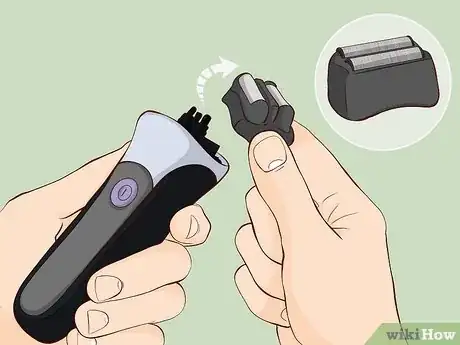






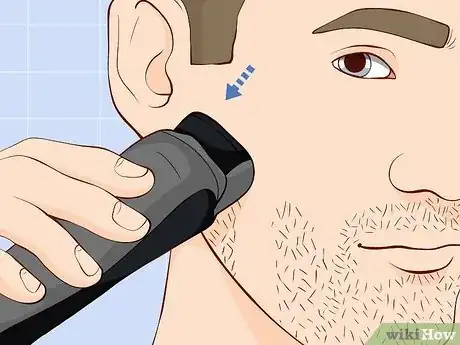


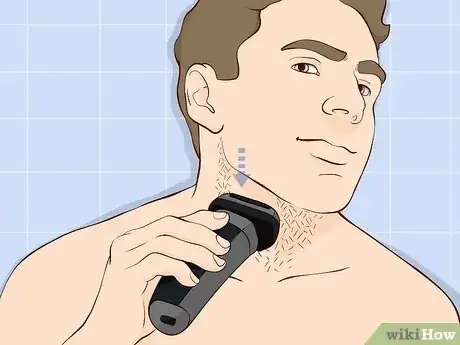




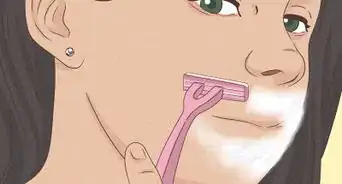

-Step-14.webp)

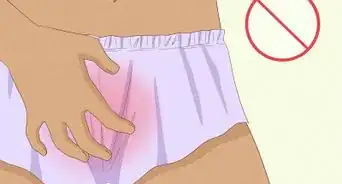
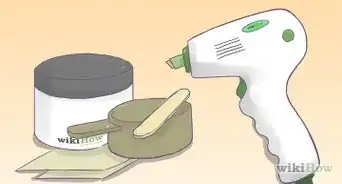

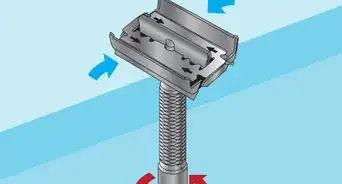
-Step-10-Version-2.webp)


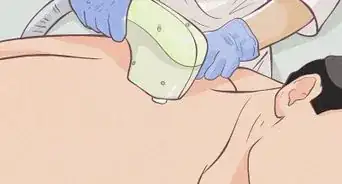










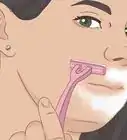

-Step-14.webp)
